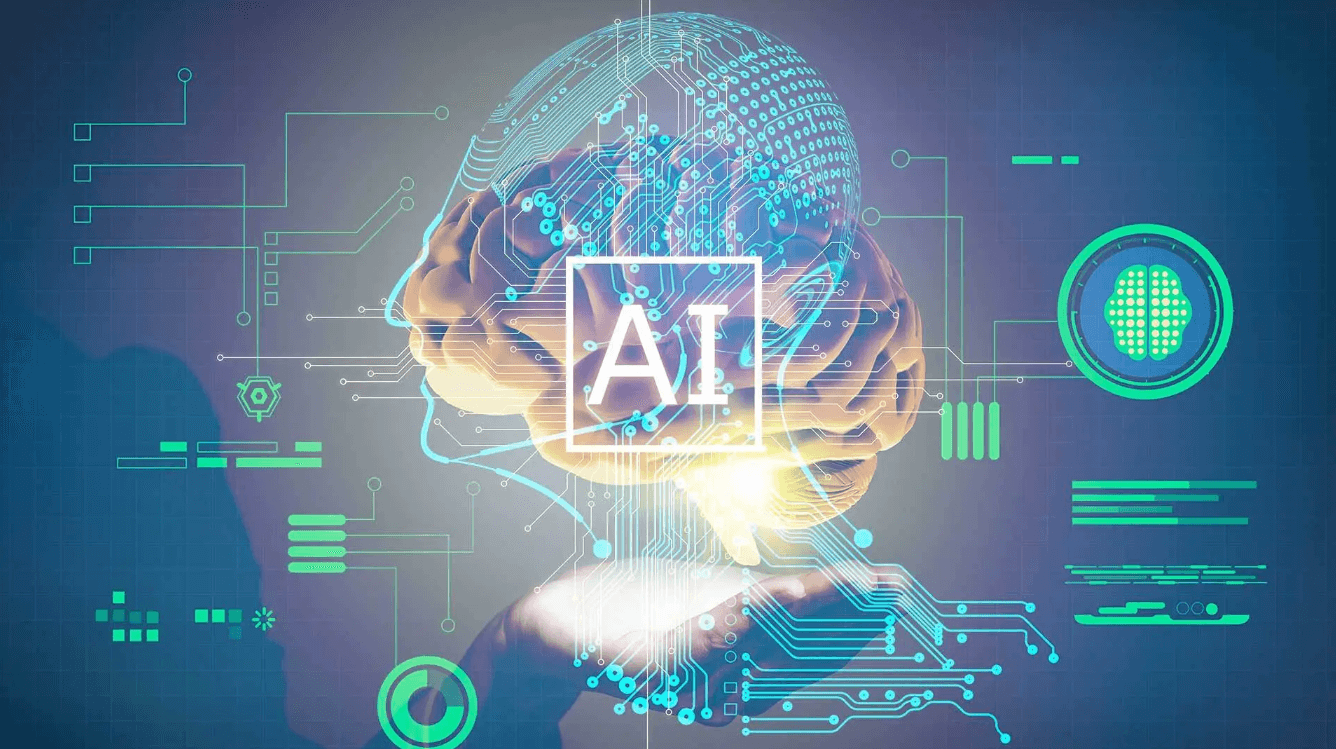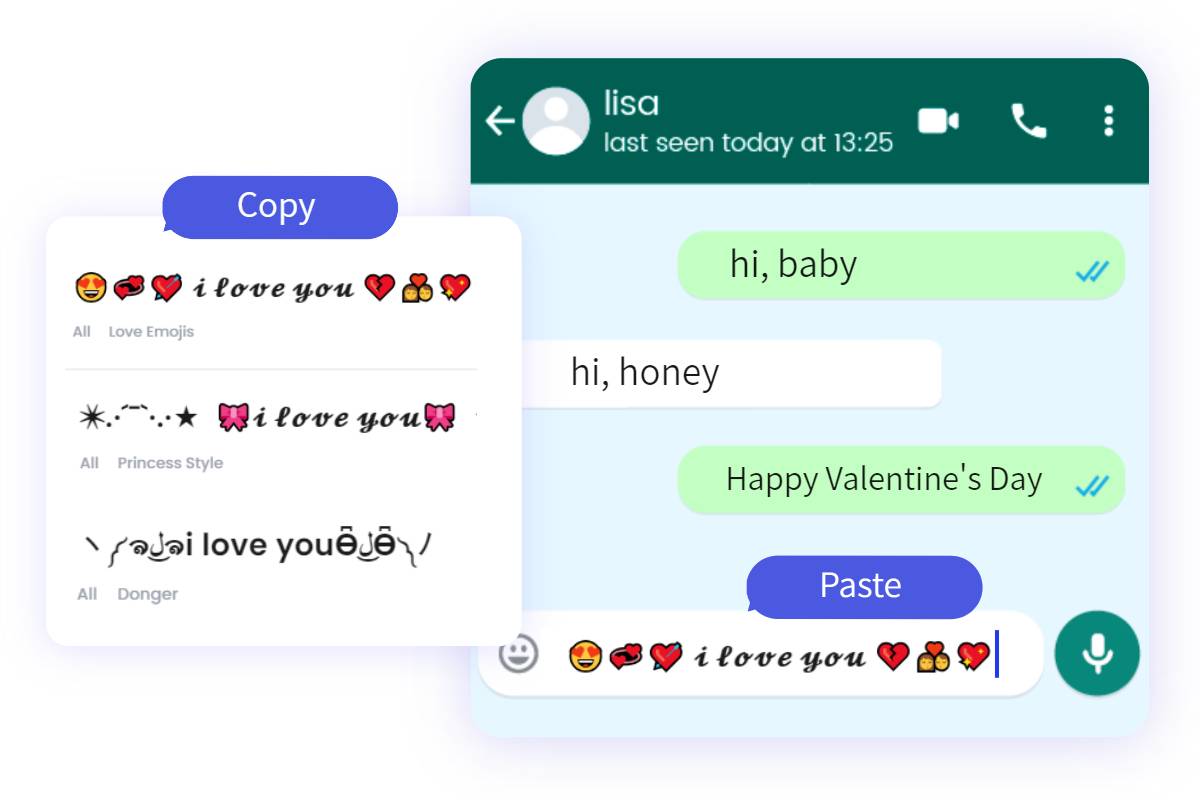In the rapidly evolving world of AI, staying informed and gaining hands-on experience with AI technologies is crucial for both beginners and seasoned professionals alike. AI playgrounds have emerged as interactive platforms that provide an engaging and accessible way to learn, experiment, and collaborate in this fascinating domain. These playgrounds offer a diverse range of tools and resources, catering to various aspects of AI, from natural language processing to computer vision and beyond.
In this blog post, we'll explore some of the top AI playground platforms, discuss their benefits, and provide guidance on how to make the most of these innovative environments. Whether you're a curious enthusiast, a student, or a seasoned professional, AI playgrounds offer an invaluable opportunity to enhance your understanding and skills in the ever-expanding field of AI.
What is AI Playground?
Before we delve into the AI playground, let's first understand what it is.
The AI Playground generally refers to a web-based platform or application where users can interact with and experiment with various AI models, tools, or algorithms. These platforms often offer an interactive interface where users can input data, tweak model parameters, and visualize the results in real time.
In the AI playground, users can input text prompts and see how the AI model generates responses or completes tasks based on the input. The playground is designed to help users understand how AI models work, explore their capabilities, and learn about their limitations. Each AI playground focuses on different aspects of AI or specific AI tools, offering users the opportunity to learn and experiment with AI technologies.
Top AI Playground Platforms
Here are some powerful and easy-to-use AI playground platforms:
1. OpenAI Playground
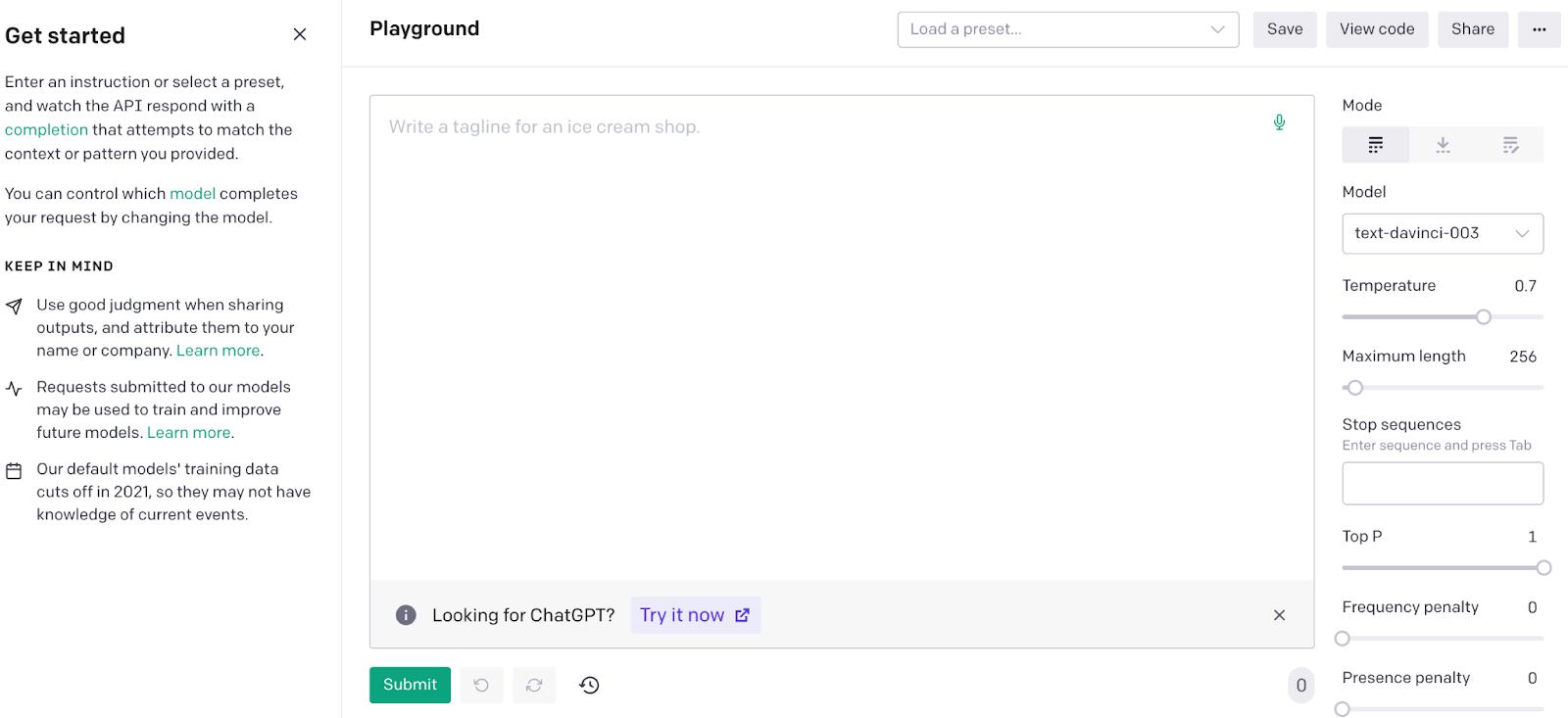
OpenAI Playground allows users to explore and experiment with OpenAI's advanced AI models, such as GPT-3 and Codex. It provides a user-friendly environment where users can input text prompts, observe the AI model's generated responses, and understand the capabilities and limitations of these models.
The platform offers features such as customizable model parameters, model selection, API integration, sample prompts, and use cases. OpenAI Playground enables users to learn how different settings impact the model's responses, test API integration before implementing it in their projects, and discover various applications of OpenAI models.
2. NVIDIA AI Playground
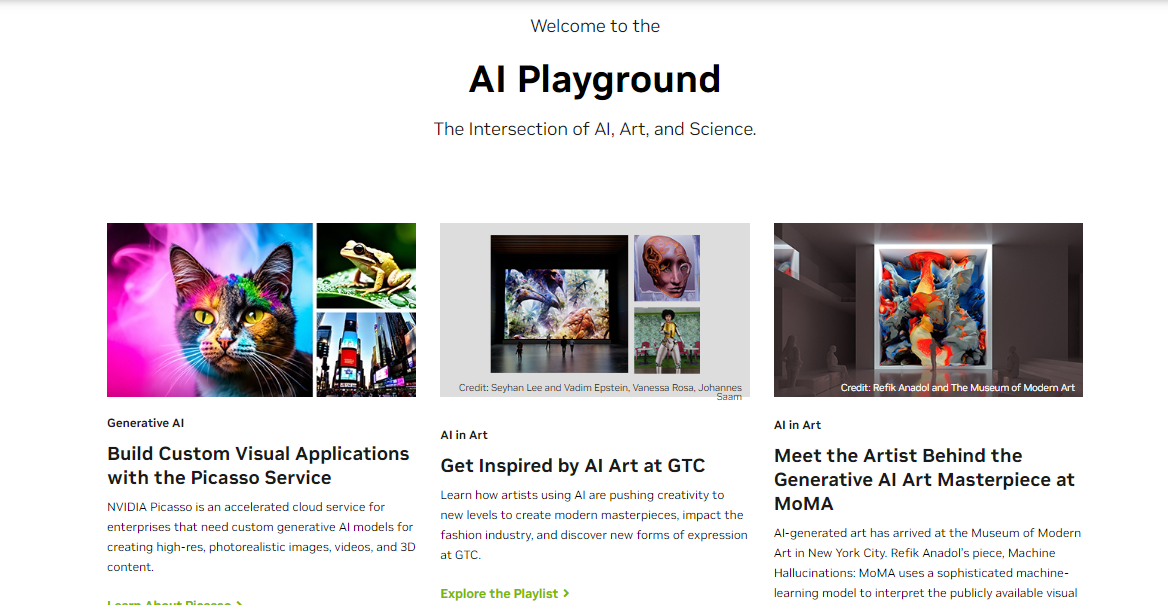
NVIDIA AI Playground is a platform designed for AI enthusiasts, researchers, and developers who want to explore, experiment with, and learn about the latest AI technologies and research. It showcases NVIDIA's AI models and tools through various demos, such as image synthesis, style transfer, and text-to-image generation.
The platform provides an interactive and user-friendly environment, allowing users to engage with AI demos, input data or parameters, and see real-time AI-generated results. NVIDIA AI Playground presents cutting-edge research and advancements in AI, along with educational resources related to the showcased demos. It also fosters collaboration and knowledge exchange within the AI community by encouraging users to share their experiences, results, and feedback.
3. AssemblyAI Playground
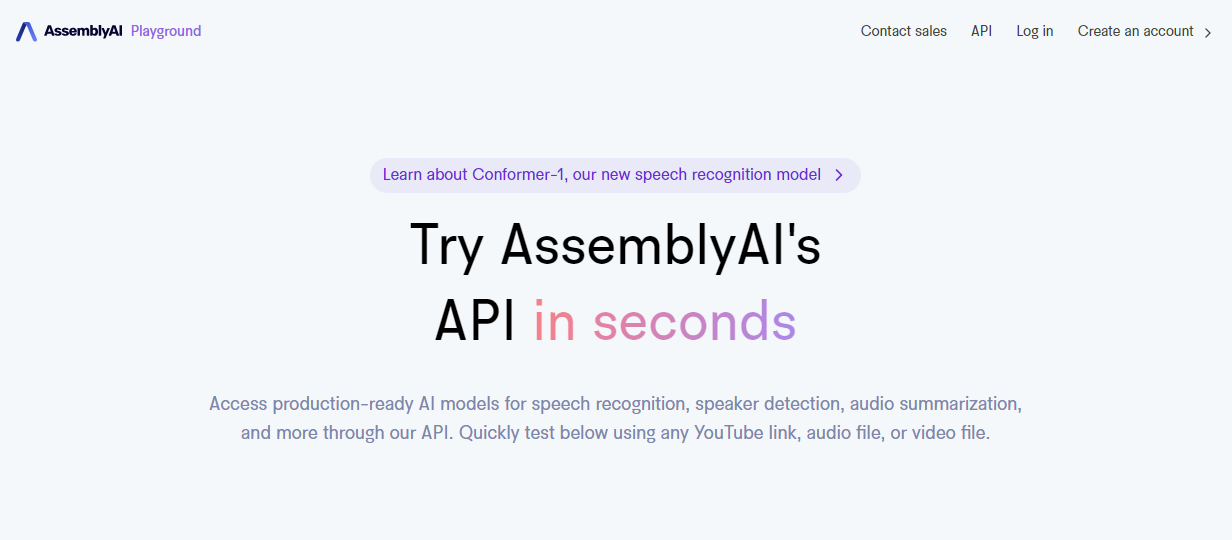
AssemblyAI is a platform specializing in automatic speech recognition. While AssemblyAI itself is not specifically an AI playground, it does offer a user-friendly API for developers to transcribe speech to text using their state-of-the-art ASR models. Users can find API documentation, sample code, and support resources on the AssemblyAI website to get started with the platform. Moreover, this playground also supports users dropping in a link to a favorite YouTube video or by uploading an audio or video file directly to play around.
4. EleutherAI Playground
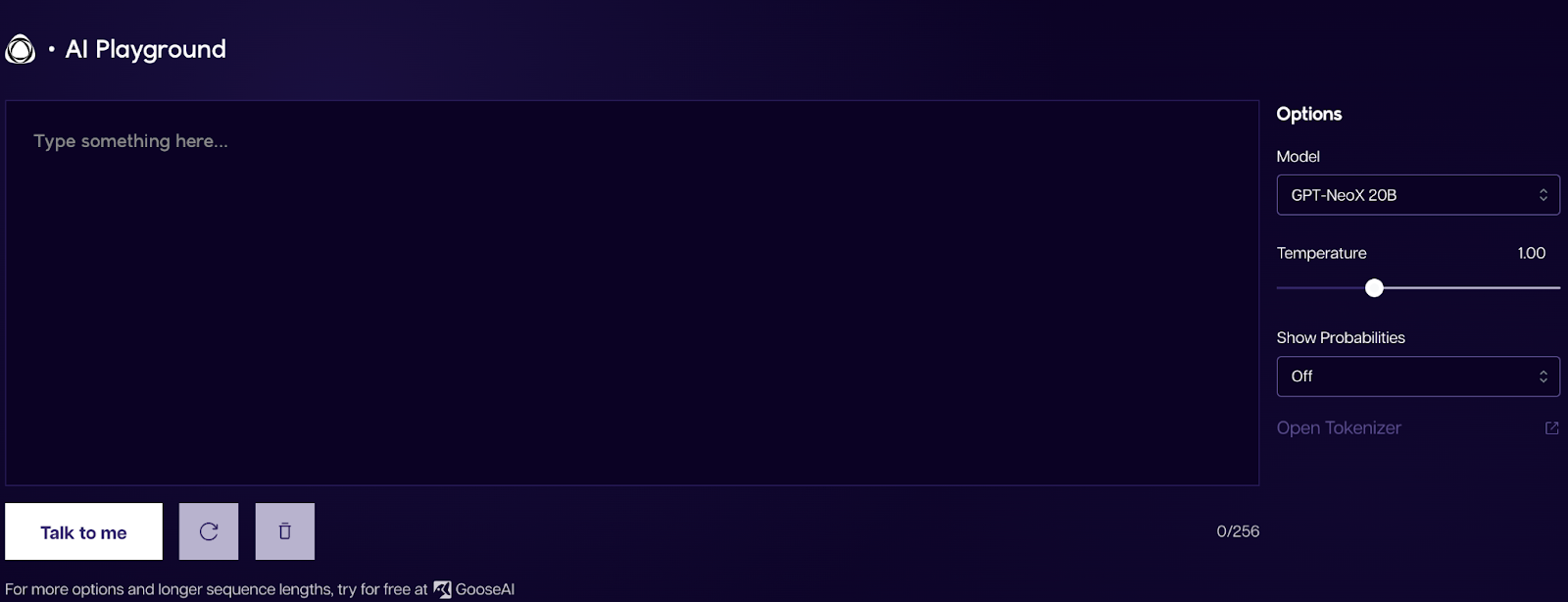
This platform offers a cooperative space for AI researchers, developers, and enthusiasts to explore and enhance AI models like GPT-3 in a transparent and easily accessible way. The primary goal of EleutherAI Playground is to make AI technology widely available and foster progress in the field through collaborative efforts and open-source development.
5. Alpa
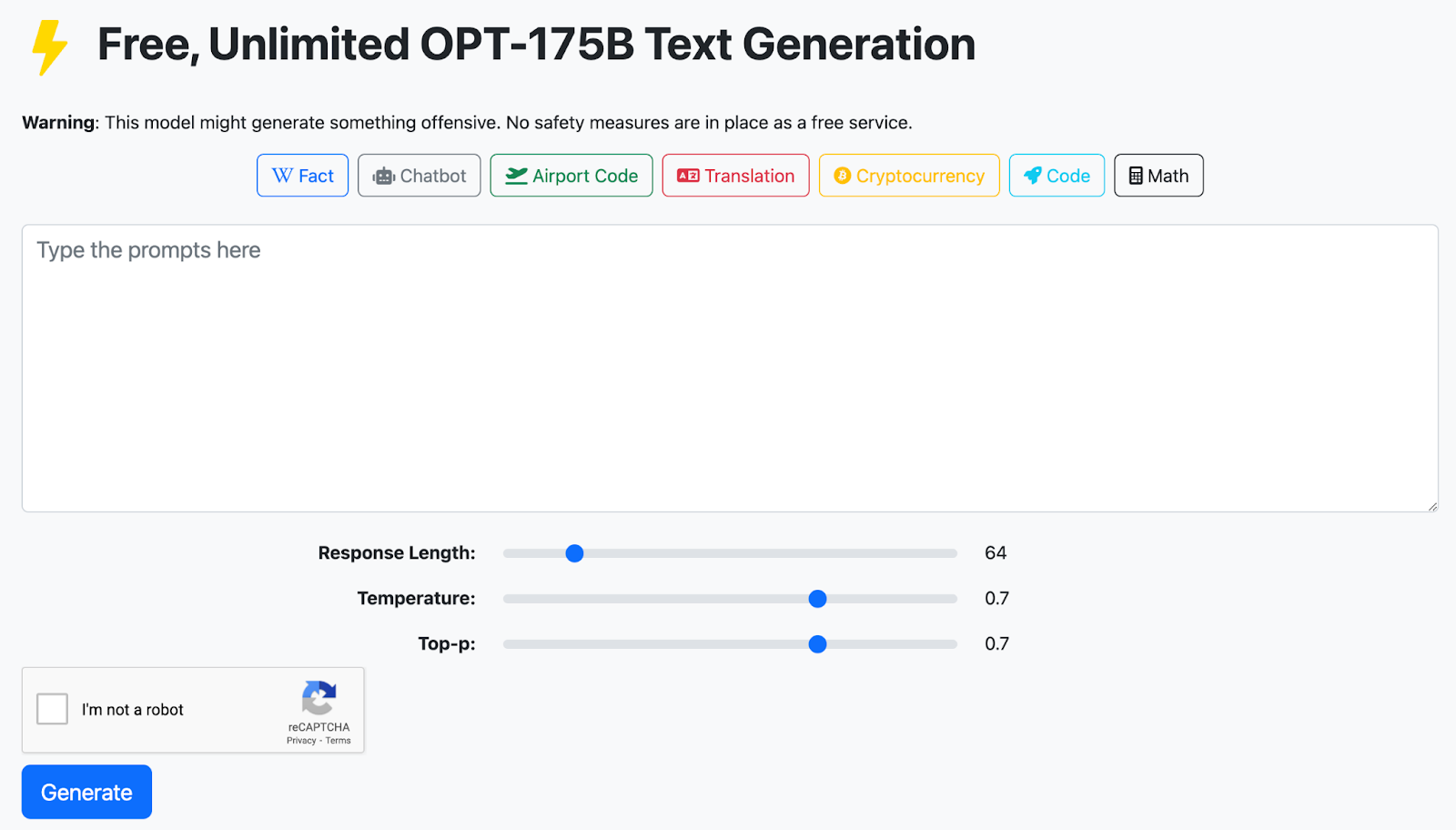
Alpa is developed by UC Berkeley's Sky Lab to simplify the training and deployment of large machine learning models like GPT-3. It provides an accessible environment with tools for model training, fine-tuning, and deployment. Alpa also hosts an AI playground featuring OPT-175B, a GPT-3-equivalent model, for free text generation. Users can explore various applications, adjust settings, or input custom prompts for a personalized experience.
6. Hugging Face Space
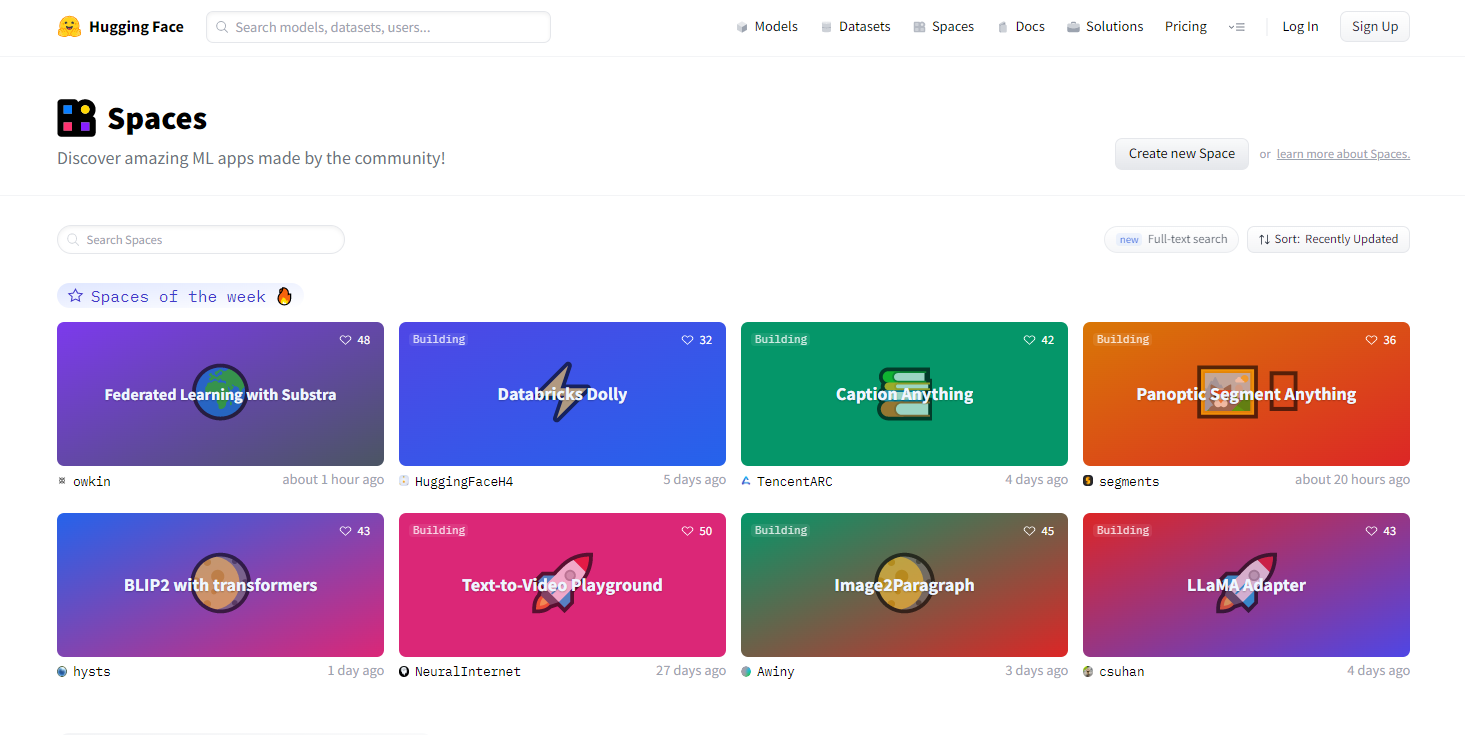
This playground simplifies the process of building, training, and deploying AI models. With an easy-to-use interface, it enables users to experiment with state-of-the-art NLP models like BERT and create custom models for specific use cases in an accessible environment.
In addition to fostering learning about AI technology, Hugging Face Spaces encourages collaboration, allowing multiple users to work on projects and share results. Although not a conventional AI playground, it showcases impressive machine-learning apps created by the Hugging Face community and offers demos of various open-source models, including Pixera, MaskCut, FLAN Grammar Correction, Aiornot, etc.
Advantages of Using AI Playgrounds
AI playgrounds offer several advantages for users exploring artificial intelligence:
- Interactive and Hands-on Learning
AI playgrounds provide an engaging environment where users can interact with various AI models and tools in real-time. This hands-on approach allows users to explore AI concepts by directly manipulating parameters, inputting data, and observing the results, leading to a better understanding of the underlying principles and algorithms.
- Rapid Prototyping and Development
With AI playgrounds, users can quickly build, test, and refine AI models without the need for extensive coding or infrastructure setup. This accelerates the development process and enables users to iterate on their ideas more efficiently, fostering innovation and experimentation.
- Collaboration and Community
AI playgrounds often promote collaboration among users, allowing them to share their knowledge, resources, and solutions. This collaborative environment fosters a sense of community and provides valuable opportunities for learning from others, getting feedback, and discovering new ideas.
- Learning Resources and Tutorials
Many AI playgrounds provide resources such as tutorials, documentation, and sample projects that guide users through the learning process. These resources offer valuable insights and explanations, helping users build a strong foundation in AI concepts and technologies.
- Accessibility and Flexibility
AI playgrounds make advanced AI tools and resources accessible to a wider audience, regardless of their technical expertise or background. This democratizes access to AI technologies and encourages more people to engage with and learn about this rapidly evolving field.
Making the Most of AI Playgrounds
- Choosing the Right Platform
Each platform has unique features and focuses on different AI technologies. You can selecting an AI playground based on your goals, interests, and expertise,etc.
- Learn from resources
Utilize the educational resources provided by the AI playgrounds, such as research papers, blog posts, and tutorials. These materials can help deepen your understanding of the AI models, their underlying technology, and the latest developments in the field.
- Apply to real-world projects
Once you have a solid understanding of the AI models and tools, consider applying them to real-world projects. This can help you gain practical experience and showcase your skills in AI development.
- Keep learning and staying updated
The field of AI is continuously evolving, so it's crucial to stay informed about the latest research, advancements, and tools. It is reconmmended to regularly visit AI playgrounds and follow relevant news sources, blogs, or conferences to stay up-to-date.
Conclusion
This blog introduces the definition of the AI placyground, and also the 6 top AI playground platforms, also the advantages and tips for using these platforms.
Now, use these top AI playground platforms and unlock your potential as an AI enthusiast, developer, or innovator. With curiosity, determination, and the right resources, there's no limit to what you can achieve in the realm of AI. Happy exploring!
